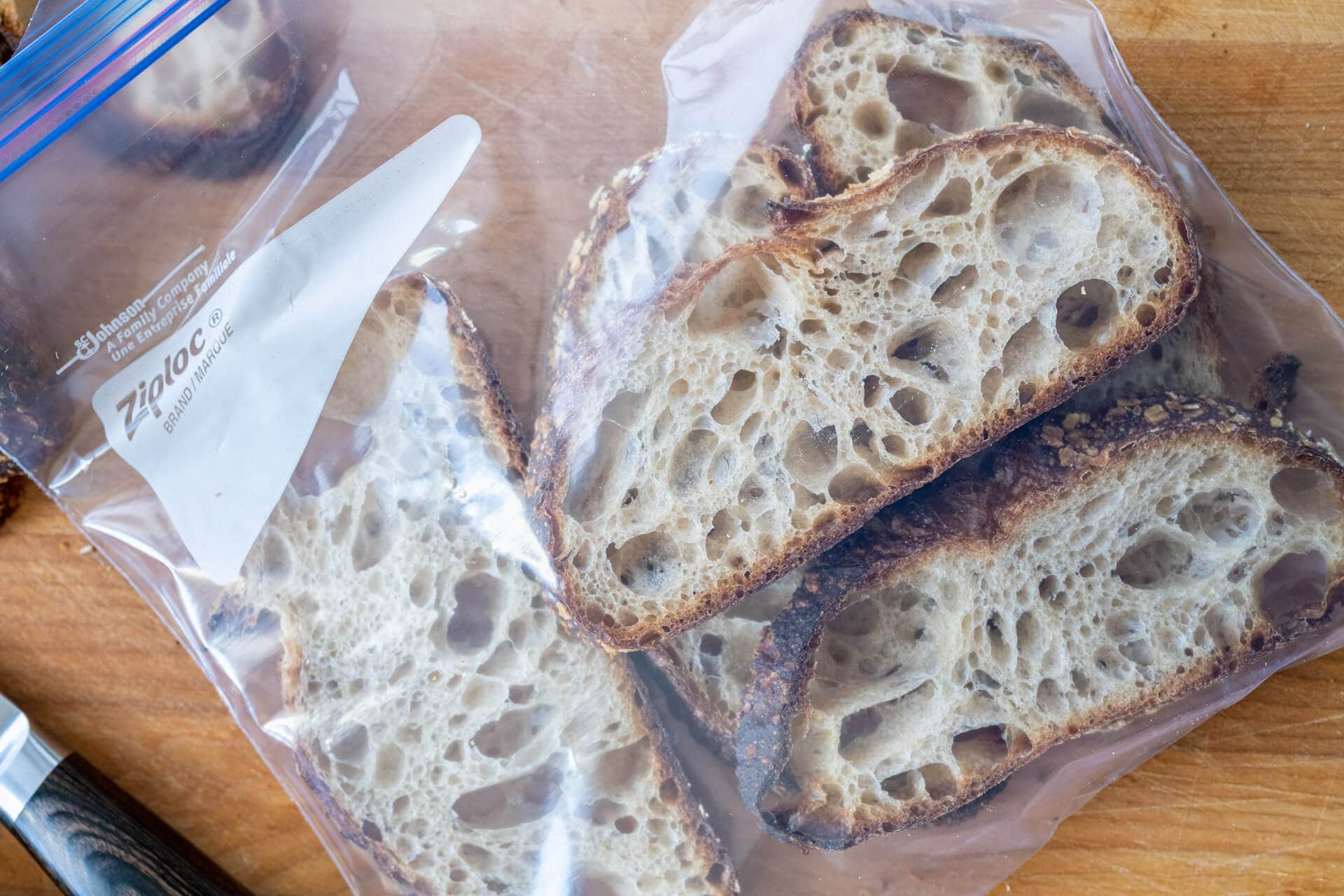

Articles
How To Store Sour Dough Bread
Modified: October 19, 2024
Discover essential tips and tricks on how to store your homemade sourdough bread effectively. Read our informative articles for expert advice and guidance.
(Many of the links in this article redirect to a specific reviewed product. Your purchase of these products through affiliate links helps to generate commission for Storables.com, at no extra cost. Learn more)
Introduction
Welcome to the world of sourdough bread! With its delicious tangy flavor and airy texture, sourdough bread has gained popularity among bread enthusiasts everywhere. Whether you are a home baker or a bread connoisseur, knowing how to store your sourdough bread properly is essential in order to maintain its freshness and quality.
In this article, we will explore the different methods of storing sourdough bread to ensure that you can enjoy its delightful taste and texture for as long as possible. We will discuss the importance of understanding sourdough bread, choosing the right storage method, and the steps for preparing and storing sourdough bread at room temperature, in the refrigerator, and in the freezer. We will also cover tips on how to revive frozen bread and maintain its freshness.
So, if you find yourself with a loaf of sourdough bread and want to make sure it stays fresh and delicious, keep reading and learn the best practices for storing this beloved bread!
Key Takeaways:
- Properly storing sourdough bread is crucial to maintain its unique flavor and texture. Whether at room temperature, in the refrigerator, or in the freezer, following the right steps ensures long-lasting freshness and deliciousness.
- Understanding the fermentation process and choosing the right storage method are key to preserving the delightful taste and texture of sourdough bread. Proper preparation, freezing, and reheating techniques help maintain its quality for extended enjoyment.
Read more: How To Store Homemade Dough
Understanding Sour Dough Bread
Sourdough bread is a type of bread that is made using a naturally fermented dough. Unlike other types of bread that rely on commercial yeast for leavening, sourdough bread gets its rise from wild yeast and bacteria that are naturally present in the environment. This wild yeast gives sourdough bread its signature tangy flavor and creates a unique texture.
The process of making sourdough bread begins by creating a starter, also known as a sourdough culture. The starter is made by combining flour and water and allowing it to ferment over several days. During this time, the wild yeast present in the environment begins to colonize the starter and ferment the mixture, leading to the development of a complex network of flavors and a bubbly, active dough.
When the starter is ready, it is combined with more flour, water, and salt to create the bread dough. The dough is then allowed to ferment and rise for several hours, or even days, depending on the recipe. This slow fermentation process not only enhances the flavor and texture of the bread but also helps improve its digestibility.
Due to its natural fermentation, sourdough bread has a longer shelf life compared to other bread types. However, it is important to store it properly to maintain its freshness and quality.
Now that we have a basic understanding of sourdough bread, let’s move on to the next section where we will explore the different methods of storing this delicious bread.
Choosing the Right Storage Method
When it comes to storing sourdough bread, choosing the right storage method is crucial to maintain its freshness and taste. There are three main options for storing sourdough bread: at room temperature, in the refrigerator, or in the freezer. Each method has its advantages and considerations, and the choice depends on factors such as how quickly you plan to consume the bread and the desired level of freshness.
If you plan to enjoy the bread within a day or two, storing it at room temperature is the most convenient option. Simply place the loaf of sourdough bread in a bread box or wrap it loosely in a clean kitchen towel to protect it from air exposure. This method allows the bread to breathe, preserving its crust while preventing it from drying out too quickly. However, keep in mind that sourdough bread stored at room temperature will become stale faster than if stored in the refrigerator.
If you do not plan to consume the bread within a few days, or if you live in a warm and humid environment, storing sourdough bread in the refrigerator is recommended. The cool temperature of the refrigerator helps to slow down the staling process and extend the freshness of the bread. Wrap the loaf tightly in plastic wrap or place it in an airtight container to prevent it from drying out.
In some cases, you may find yourself with more bread than you can consume before it starts to stale. In this situation, freezing sourdough bread is a viable option. Freezing not only preserves the freshness of the bread but also allows you to store it for an extended period, up to several months. To freeze sourdough bread, first, make sure it is completely cooled. Then, wrap it tightly in plastic wrap, and place it in a freezer bag or an airtight container. Proper packaging will prevent freezer burn and maintain the quality of the bread.
Now that we have discussed the different storage methods for sourdough bread, let’s move on to the next section where we will delve into the steps for preparing the bread for storage.
Preparing the Bread for Storage
Before storing your sourdough bread, it is important to properly prepare it to ensure optimal freshness and quality. Here are some steps to follow:
- Cool the bread: Allow the freshly baked sourdough bread to cool completely on a wire rack. This step is crucial as it helps prevent moisture buildup, which can lead to mold growth.
- Protect the crust: To maintain a crispy crust, avoid wrapping the bread tightly in plastic or sealing it in a container immediately after baking. Instead, let it sit uncovered for a few hours to allow the crust to fully develop.
- Wrap it right: When storing sourdough bread at room temperature or in the refrigerator, wrap it loosely in a clean kitchen towel or place it in a breathable bread box. This allows air circulation while protecting the bread from drying out too quickly. If freezing the bread, wrap it tightly in plastic wrap or place it in an airtight container to prevent freezer burn.
- Date and label: To keep track of the bread’s freshness, write the date on the packaging when storing it in the refrigerator or freezer.
By following these steps, you can ensure that your sourdough bread remains fresh and delicious for an extended period.
Now that the bread is properly prepared, depending on your desired storage method, let’s dive into the details of storing sourdough bread at room temperature, in the refrigerator, and in the freezer in the upcoming sections.
Storing Sour Dough Bread at Room Temperature
When it comes to storing sourdough bread at room temperature, the goal is to strike a balance between preserving its crust and preventing it from becoming stale too quickly. Here are the steps to follow:
- Choose the right container: If you have a bread box, this is an ideal option for storing sourdough bread at room temperature. The bread box provides a breathable environment while protecting the bread from dust and direct sunlight. If you don’t have a bread box, you can use a clean kitchen towel to loosely wrap the bread.
- Keep it properly: Place the sourdough bread in the bread box or wrap it loosely in the kitchen towel. Make sure the bread is not squished or squeezed, as this can affect its texture.
- Avoid moisture: To prevent moisture buildup, avoid storing sourdough bread in plastic bags or containers at room temperature. These can trap moisture and accelerate mold growth.
- Keep it away from heat and moisture sources: Store the bread in a cool, dry place, away from direct sunlight, heat sources, and moisture. Avoid keeping it near the stove, oven, or kitchen appliances that produce heat.
- Monitor the freshness: Sourdough bread stored at room temperature typically stays fresh for 2-3 days. Check the bread regularly for any signs of mold or staleness. If you notice any, it’s time to discard the bread.
By following these steps, you can enjoy your sourdough bread at room temperature for a few days without compromising its flavor and texture.
In the next section, we will explore the process of storing sourdough bread in the refrigerator.
Store sourdough bread at room temperature in a paper bag or bread box for up to 2-3 days. For longer storage, wrap it in a clean kitchen towel and store in a cool, dark place or freeze for up to 3 months.
Read more: How To Store Yeast Dough
Storing Sour Dough Bread in the Refrigerator
If you plan to store sourdough bread for a longer period or want to slow down the staling process, storing it in the refrigerator is a recommended option. Follow these steps to store sourdough bread in the refrigerator:
- Wrap it tightly: After the sourdough bread has cooled completely, wrap it tightly in plastic wrap or place it in an airtight container. This helps to prevent moisture loss and keeps the bread from drying out.
- Label the packaging: Write the date on the packaging, so you can keep track of the bread’s freshness. Sour dough bread stored in the refrigerator typically stays fresh for about a week.
- Place in the designated area: Find a spot in your refrigerator where the bread can be stored without being crushed or squished by other items. Consider using a dedicated space to avoid any potential contamination from strong odors or flavors in the fridge.
- Avoid freezing: While the refrigerator helps prolong the freshness of sourdough bread, freezing it directly without consuming it within a week is not advisable. Freezing can affect the texture and flavor of the bread.
- Revive before consumption: When you are ready to eat the refrigerated sourdough bread, it’s best to take it out of the refrigerator and allow it to come to room temperature. This will help restore its texture and enhance the flavor.
By following these steps, sourdough bread stored in the refrigerator can stay fresh for a longer time while preserving its quality.
Next, we will discuss the process of freezing sourdough bread for longer-term storage.
Freezing Sour Dough Bread
If you have a surplus of sourdough bread or want to store it for an extended period, freezing is a great option. Freezing sourdough bread allows you to maintain its freshness and enjoy it at a later time. Follow these steps to freeze sourdough bread:
- Cool the bread completely: Allow the sourdough bread to cool completely after baking. It’s important to freeze the bread when it is at room temperature to prevent condensation and moisture buildup during freezing.
- Wrap it tightly: Wrap the sourdough bread tightly in plastic wrap or aluminum foil. Make sure to cover the entire bread to prevent freezer burn.
- Place in a freezer-safe container: Put the wrapped bread in a freezer-safe bag or container for extra protection against freezer burn and to keep the bread from absorbing odors from the freezer.
- Label the package: Write the date on the packaging. This will help you keep track of how long the bread has been frozen.
- Store in the freezer: Place the packaged sourdough bread in the freezer, keeping it in a flat position to prevent the bread from getting squashed by other items.
Sourdough bread can be stored in the freezer for up to 3 months without significant loss of quality. However, it is best to consume it within the first month for the best taste and texture.
When you’re ready to enjoy the frozen sourdough bread, simply remove it from the freezer and let it thaw at room temperature. It’s recommended to keep it wrapped while thawing to prevent moisture loss. Once the bread has thawed, you can reheat or toast it to bring back its crustiness.
Now that you know how to freeze sourdough bread, let’s move on to the next section where we will discuss how to reheat and revive frozen sourdough bread.
Reheating and Reviving Frozen Sour Dough Bread
When it comes to reheating and reviving frozen sourdough bread, there are a few methods you can use to bring it back to its fresh and delicious state:
- Thawing at room temperature: The simplest method to revive frozen sourdough bread is to let it thaw at room temperature. Remove the bread from the freezer and unwrap it. Place it on a wire rack or in a bread basket, allowing it to thaw for a few hours or overnight. Once thawed, you can enjoy the bread as is or lightly toast it for added crispness.
- Toasting: If you prefer a warmer and crustier texture, toasting the frozen sourdough bread is a great option. Slice the frozen bread and place it directly in the toaster or toaster oven. Toast it until golden brown and crisp. Be sure to keep an eye on it to prevent burning.
- Oven revival: For larger portions or if you want to bring back the bread’s original crustiness, using the oven is a good choice. Preheat your oven to 350°F (175°C). Remove the frozen sourdough bread from its packaging and place it directly on the oven rack or on a baking sheet. Bake for 10-15 minutes, or until the bread is warmed through and the crust is crispy.
Regardless of the method you choose, it’s essential to monitor the bread closely to prevent it from burning or becoming overly dry. Remember that reheating can slightly alter the texture of the bread, but it will still be delicious and enjoyable.
Now that you know how to revive frozen sourdough bread, let’s move on to the final section where we will share some tips for maintaining the freshness and quality of sourdough bread.
Tips for Maintaining Freshness and Quality
To ensure the freshness and quality of sourdough bread, here are some additional tips and best practices:
- Store in a cool, dry place: Whether you’re storing sourdough bread at room temperature or in the refrigerator, it’s important to keep it away from heat and moisture sources. Find a cool and dry spot in your kitchen or pantry to store the bread.
- Store unsliced: It’s best to store sourdough bread in its original unsliced form. Sliced bread tends to dry out faster, so it’s recommended to slice it just before serving.
- Slice before freezing: If you plan to freeze sourdough bread, consider slicing it before freezing. This allows you to thaw and use only the amount of bread you need at a time, without having to thaw the entire loaf.
- Avoid storing with strong-smelling foods: Sour dough bread has a delicate flavor that can easily absorb odors from other strong-smelling foods. Keep it away from onions, garlic, or highly aromatic items to preserve its original taste.
- Re-wrap after each use: When storing bread at room temperature or in the refrigerator, rewrap it with fresh plastic wrap or insert it into a new bag after each use. This helps to maintain the freshness and prevent moisture loss.
- Consider portioning: If you find yourself frequently freezing and thawing sourdough bread, consider portioning it into smaller slices or pieces before freezing. This way, you can thaw only the amount you need for each occasion.
- Use a bread knife: When slicing sourdough bread, use a serrated bread knife to ensure clean cuts and prevent squishing or crushing the loaf.
- Enjoy within a few days: While sourdough bread can be stored for longer periods, it is best enjoyed within a few days of baking. The fresh flavor and texture are at their best during this time.
By following these tips, you can prolong the freshness and quality of your sourdough bread, ensuring that each slice is a delight to savor.
Now that you’re armed with the knowledge of storing and maintaining sourdough bread, let’s conclude this article in the next section.
Read more: How To Store Pasta Dough
Conclusion
Properly storing sourdough bread is essential to maintain its freshness, flavor, and texture. Whether you plan to enjoy it within a few days or want to store it for longer periods, understanding the different storage methods and following the right steps can make a significant difference in preserving the quality of this delicious bread.
In this article, we discussed the importance of understanding sourdough bread’s unique fermentation process and how it contributes to its flavor and texture. We explored the different storage methods, including storing at room temperature, in the refrigerator, and in the freezer, and provided detailed instructions for each method.
We also covered the steps for properly preparing sourdough bread for storage, ensuring that it is protected and maintains its freshness. Additionally, we discussed the process of reheating and reviving frozen sourdough bread to bring it back to its original deliciousness.
To maintain the freshness and quality of sourdough bread, we shared some helpful tips, such as storing in a cool and dry place, avoiding strong-smelling foods, and re-wrapping the bread after each use.
By following these guidelines and best practices, you can enjoy the delightful taste and texture of sourdough bread for an extended period, whether it’s just for a few days or even up to several months when properly frozen.
So, the next time you have a loaf of sourdough bread on hand, remember to store it correctly and enjoy the incredible flavors and textures that this bread has to offer.
Happy baking and storing!
Frequently Asked Questions about How To Store Sour Dough Bread
Was this page helpful?
At Storables.com, we guarantee accurate and reliable information. Our content, validated by Expert Board Contributors, is crafted following stringent Editorial Policies. We're committed to providing you with well-researched, expert-backed insights for all your informational needs.



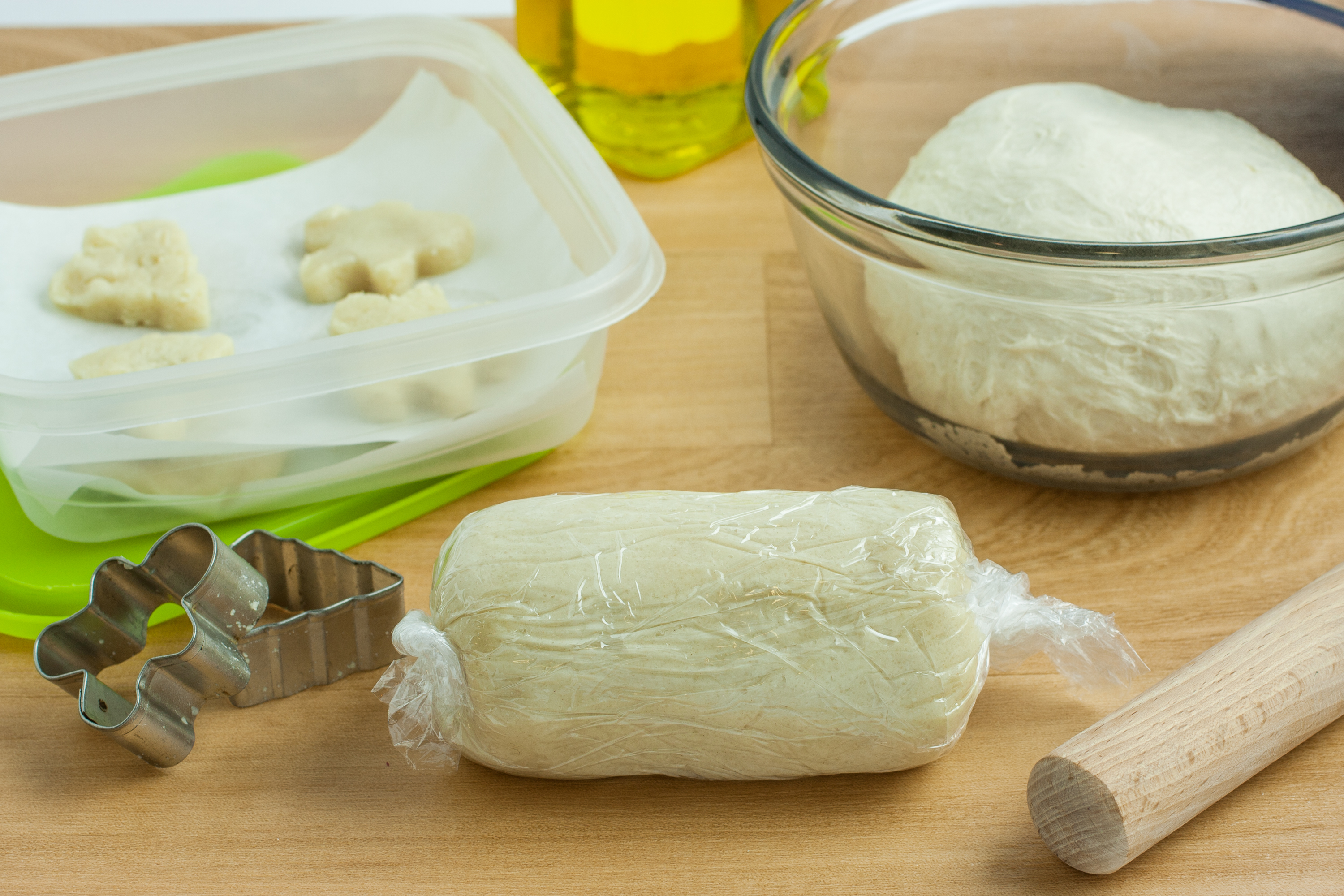
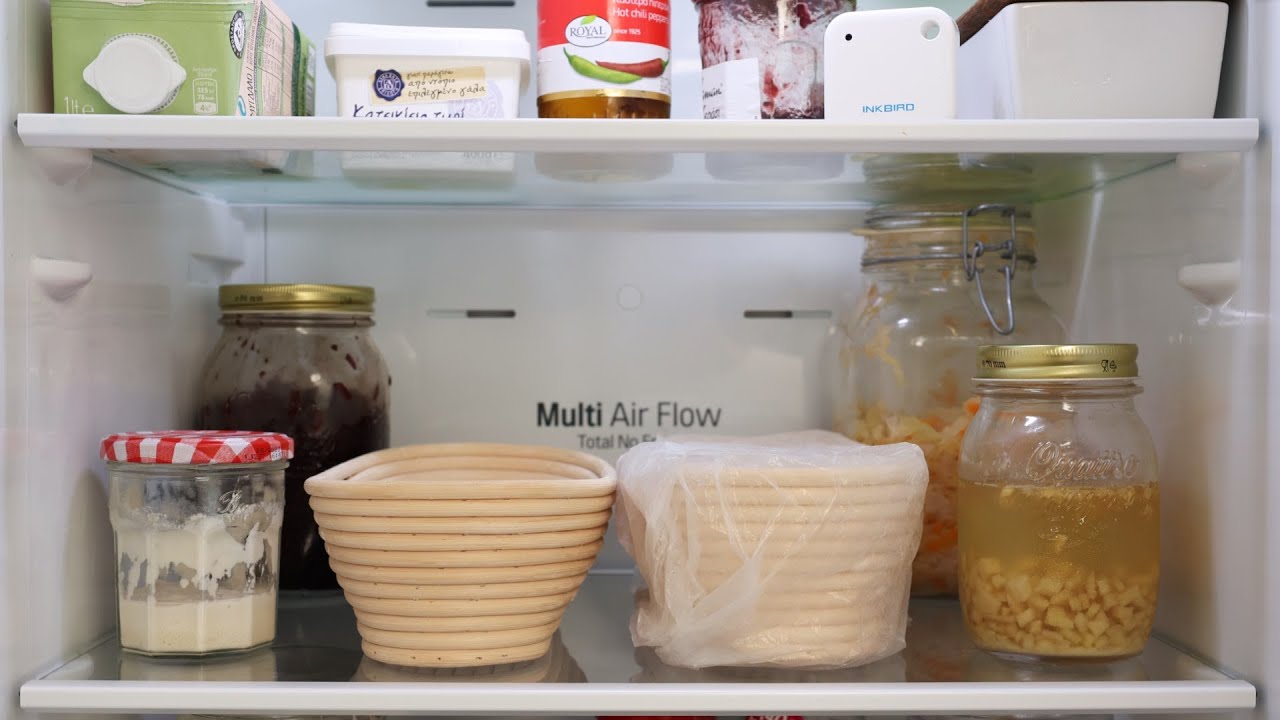
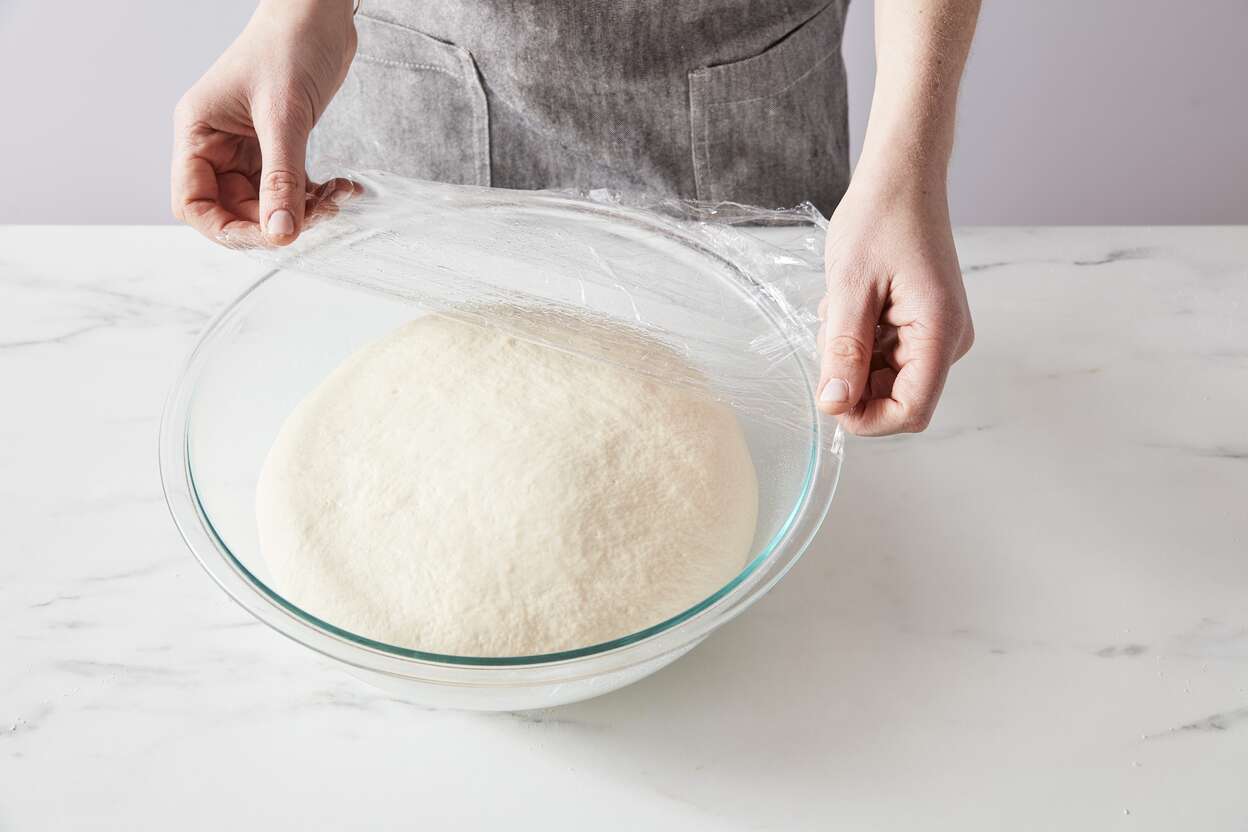

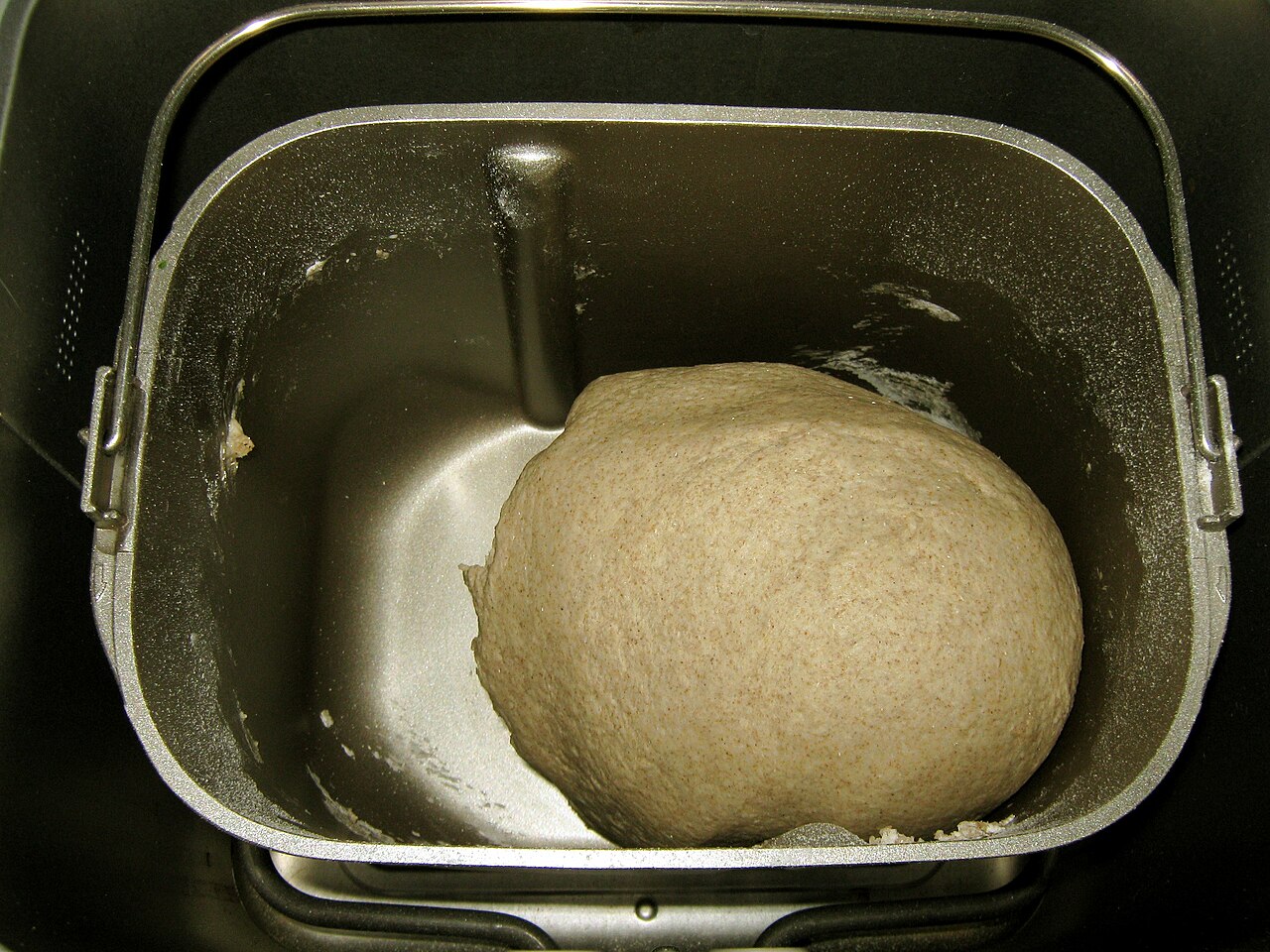
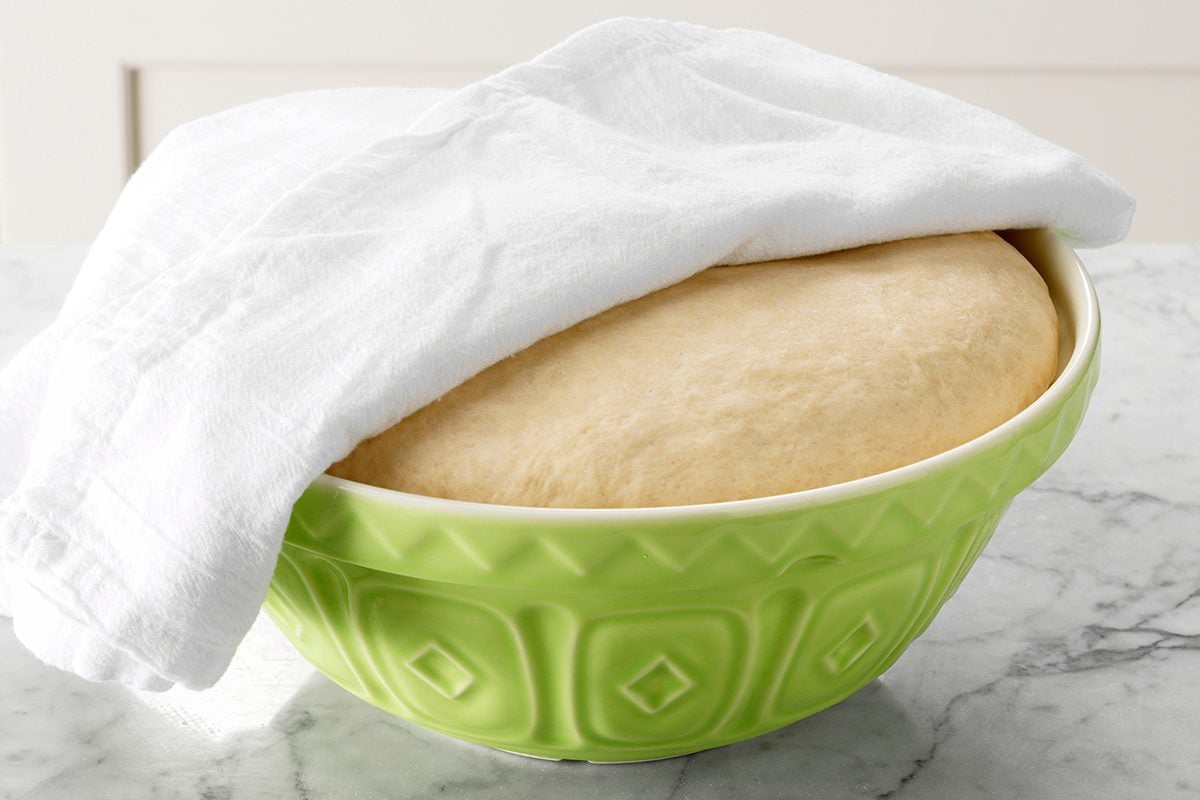
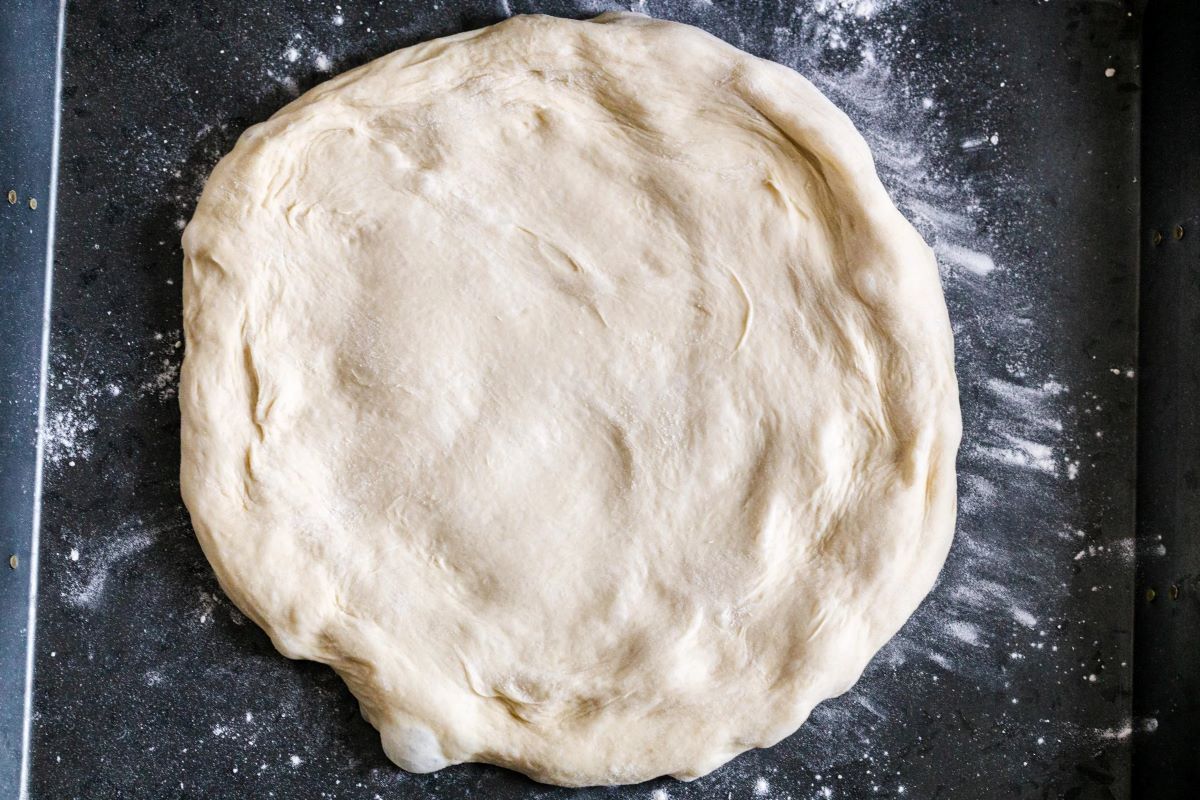
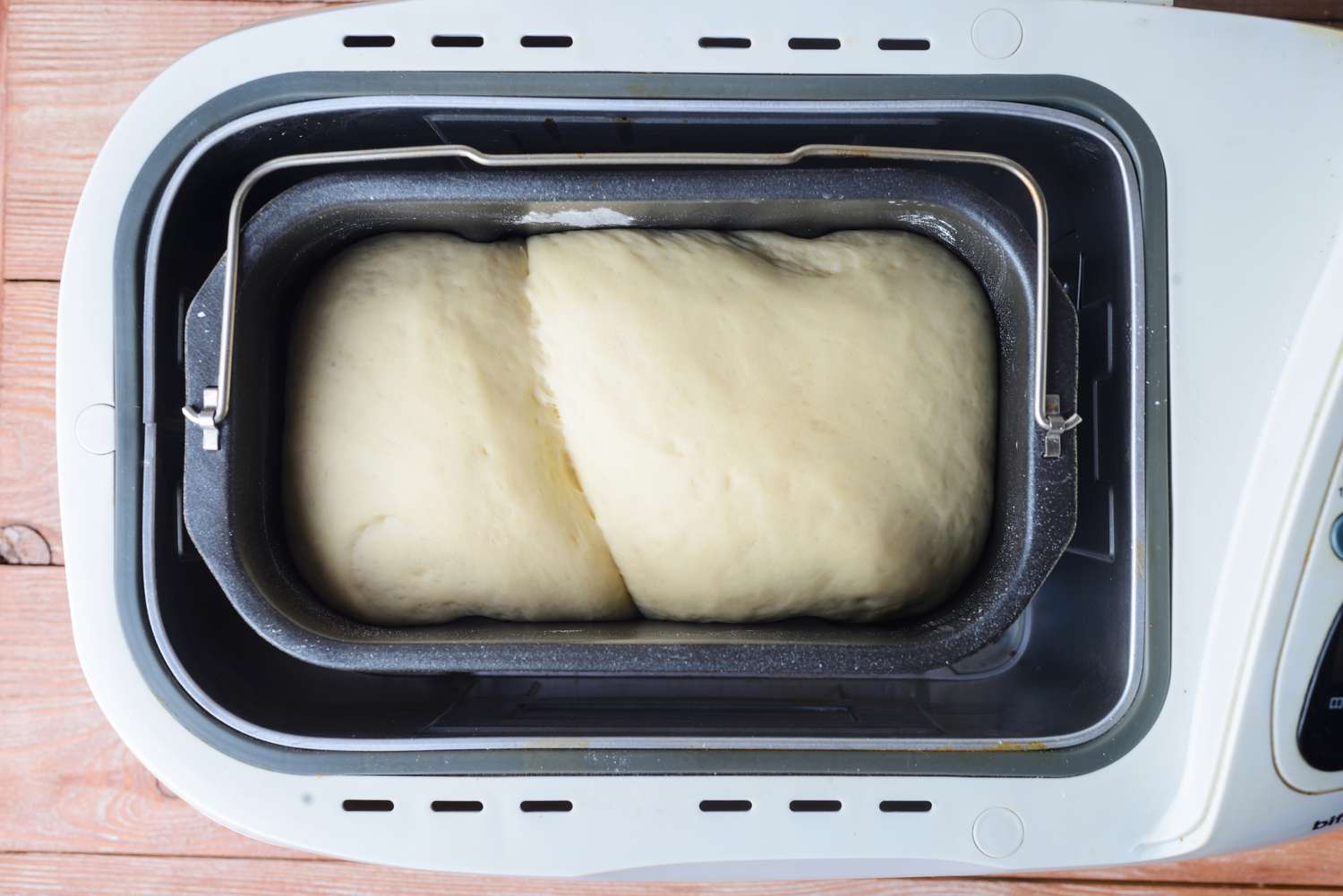
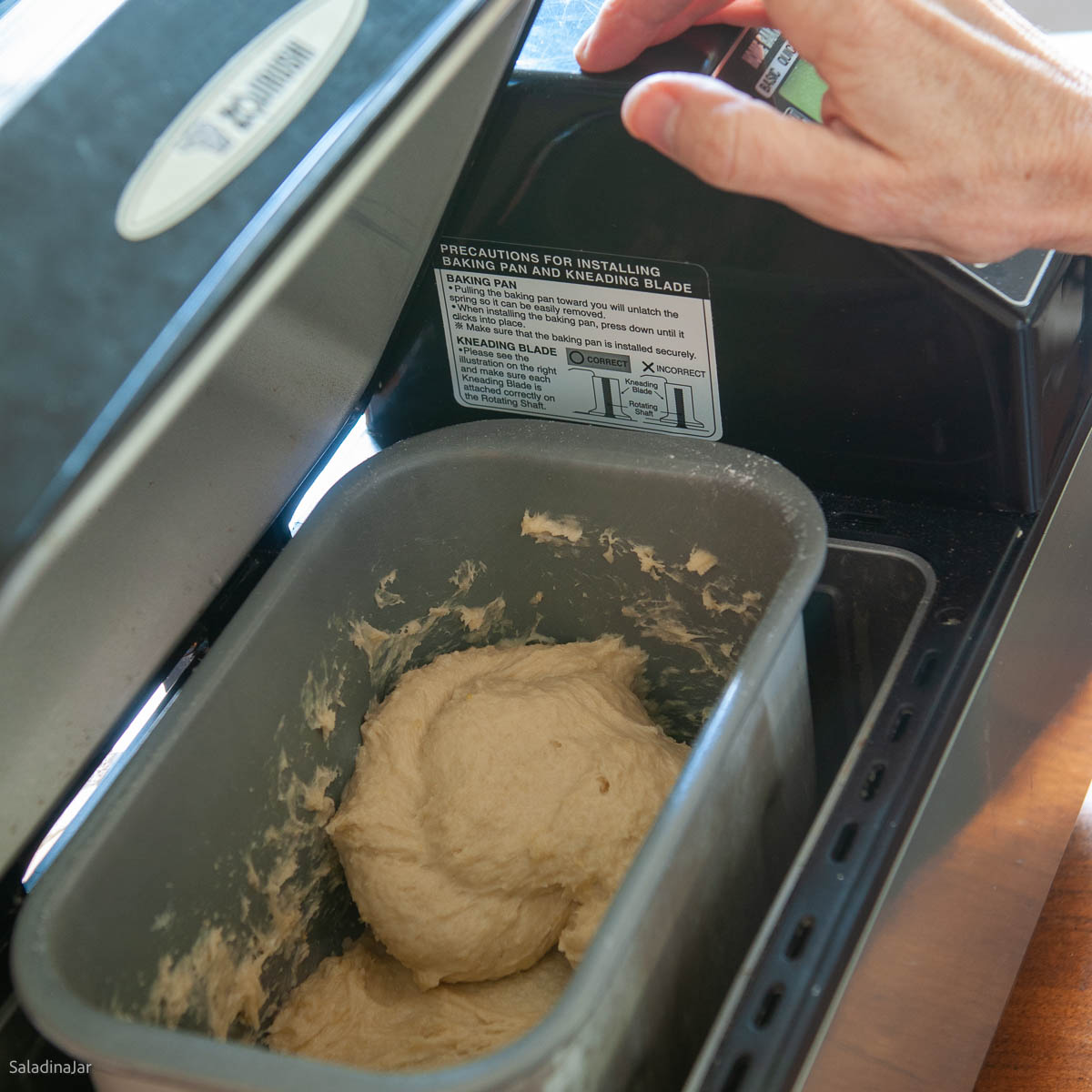


0 thoughts on “How To Store Sour Dough Bread”